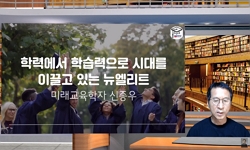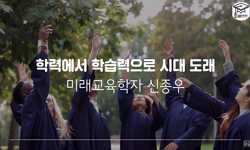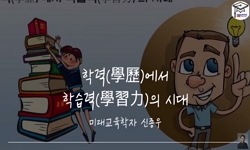This paper estimates the mortality differentials by educational attainment in Korea over the last 30 years, combining the information of Death Cause Statistics and Population Census. Based on these estimates significant findings include the followings...
http://chineseinput.net/에서 pinyin(병음)방식으로 중국어를 변환할 수 있습니다.
변환된 중국어를 복사하여 사용하시면 됩니다.
- 中文 을 입력하시려면 zhongwen을 입력하시고 space를누르시면됩니다.
- 北京 을 입력하시려면 beijing을 입력하시고 space를 누르시면 됩니다.

한국의 학력별 사망률 격차, 1985-2015 = Mortality Differentials by Educational Attainment in Korea, 1985-2015
한글로보기부가정보
다국어 초록 (Multilingual Abstract)

This paper estimates the mortality differentials by educational attainment in Korea over the last 30 years, combining the information of Death Cause Statistics and Population Census. Based on these estimates significant findings include the followings. First, the mortality rate (over 30s) of men declined to 0.49 in 2015 compared to 1985 (= 1) when controlling population composition changes such as aging and higher education. The corresponding mortality rates for women dropped to 0.53, narrowing the gender gap. Second, the mortality differentials by educational attainment varied according to age. In the case of men in their 50s, the mortality rate of middle and high school graduates and college graduates was 0.36 and 0.19 in 2015 respectively, compared with those of elementary school graduates or below (= 1). The corresponding mortality rates for women were 0.45 and 0.34, respectively, and the gap was smaller than that for men. Third, the mortality rate declined in all educational backgrounds, and the higher the level of education, the greater the benefit. Fourth, we divide into two groups of upper and lower 50% based on education level and compared the mortality gap between them. In the age group of 30s-50s, the gap between them did not show a clear trend, but the mortality gap rapidly expanded in the 60s or older, when the difference in the past mortality rate was insignificant.
본고는 『인구센서스』와 『사망원인통계』의 정보를 결합하여 지난 30년간 사망률의 추이와 학력별 사망률 격차를 추정하였다. 본고에서 새롭게 드러난 사실을 정리하면 다음과 같다. 첫...
본고는 『인구센서스』와 『사망원인통계』의 정보를 결합하여 지난 30년간 사망률의 추이와 학력별 사망률 격차를 추정하였다. 본고에서 새롭게 드러난 사실을 정리하면 다음과 같다. 첫째, 고령화나 고학력화와 같은 인구 구성 변화를 통제하였을 경우 남자의 사망률(30대 이상)은 1985년(=1) 대비로 2015년에는 0.49로 하락하였고 여자는 0.53으로 하락한 결과, 남녀의 사망률 격차는 다소 좁혀졌다. 둘째, 학력 간 사망률 격차는 연령별로 다른 양상을 보였는데, 예컨대 50대 남자의 경우 초졸 이하(=1) 대비 중고졸과 대졸의 사망률이 2015년에 각각 0.36과 0.19로 나왔다. 그에 대응하는 여자의 사망률은 각각 0.45와 0.34로 나와 남자보다 격차가 적었다. 셋째, 모든 학력에서 사망률이 하락하였지만, 학력이 높을수록 그 혜택을 더 많이 보았다. 넷째, 학력 기준으로 상하 두 계층의 사망률 격차를 비교해 보면, 30-50대에서는 계층 간 격차가 뚜렷한 추세를 보이지 않았지만, 과거 사망률의 차이가 미미했던 60대 이상에서 오히려 계층 간 격차가 빠르게 확대되어 왔음을 알 수 있다.
참고문헌 (Reference)
1 김낙년, "한국의 부의 불평등, 2000-2013: 상속세 자료에 의한 접근" 경제사학회 40 (40): 393-429, 2016
2 손미아, "직업,교육수준 그리고 물질적 결핍이 사망률에 미치는 영향" 대한예방의학회 35 (35): 10-82, 2002
3 강영호, "우리 나라의 사회경제적 사망률 불평등: 1998년도 국민건강영양조사 자료의 사망추적 결과" 대한예방의학회 39 (39): 115-122, 2006
4 김진영, "사회경제적 지위와 건강의 관계:연령에 따른 변화를 중심으로" 한국사회학회 41 (41): 127-153, 2007
5 송윤미, "사회경제적 수준과 사망의 연관성: 한국 남성 759,665명에서의 코호트 연구" 20 (20): 219-225, 1998
6 강영호, "사회경제적 사망률 불평등 : 한국노동패널 조사의 추적 결과" 한국보건행정학회 14 (14): 1-20, 2004
7 우해봉, "국민연금 가입자의 소득계층별 차별 사망력과 기대여명" 한국사회복지정책학회 38 (38): 113-140, 2011
8 김진영, "교육집단별 건강 추세에 대한 분석" 한국인구학회 34 (34): 99-127, 2011
9 조홍준, "公敎 醫療保險 被報險者의 社會階層別 死亡率 差異에 關한 硏究" 서울大學校 保健大學院 1997
10 Baker, David, "The Education Effect on Population Health: A Reassessment" 37 (37): 307-332,
1 김낙년, "한국의 부의 불평등, 2000-2013: 상속세 자료에 의한 접근" 경제사학회 40 (40): 393-429, 2016
2 손미아, "직업,교육수준 그리고 물질적 결핍이 사망률에 미치는 영향" 대한예방의학회 35 (35): 10-82, 2002
3 강영호, "우리 나라의 사회경제적 사망률 불평등: 1998년도 국민건강영양조사 자료의 사망추적 결과" 대한예방의학회 39 (39): 115-122, 2006
4 김진영, "사회경제적 지위와 건강의 관계:연령에 따른 변화를 중심으로" 한국사회학회 41 (41): 127-153, 2007
5 송윤미, "사회경제적 수준과 사망의 연관성: 한국 남성 759,665명에서의 코호트 연구" 20 (20): 219-225, 1998
6 강영호, "사회경제적 사망률 불평등 : 한국노동패널 조사의 추적 결과" 한국보건행정학회 14 (14): 1-20, 2004
7 우해봉, "국민연금 가입자의 소득계층별 차별 사망력과 기대여명" 한국사회복지정책학회 38 (38): 113-140, 2011
8 김진영, "교육집단별 건강 추세에 대한 분석" 한국인구학회 34 (34): 99-127, 2011
9 조홍준, "公敎 醫療保險 被報險者의 社會階層別 死亡率 差異에 關한 硏究" 서울大學校 保健大學院 1997
10 Baker, David, "The Education Effect on Population Health: A Reassessment" 37 (37): 307-332,
11 Brown, Jeffrey, "The Distributional Aspects of Social Security and Social Security Reform" University of Chicago Press 2002
12 Macintyre, Sally, "The Black Report and Beyond: What Are the Issues?" 44 (44): 723-745, 1997
13 Makenbach, Johan, "Socioeconomic Inequalities in Mortality Among Women and Among Men: An International Study" 89 (89): 1800-1806, 1999
14 United States Census Bureau, "National Longitudinal Mortality Survey"
15 Rogot, Eugene, "Life Expectancy by Employment Status, Income, and Education in the National Longitudinal Mortality Study" 107 (107): 457-461, 1992
16 Kang, Yong-Ho, "Health Inequalities in Korea: Age-and Sex-Specific Educational Differences in the 10 Leading Causes of Death" 33 : 299-308, 2004
17 Song, Yun-Mi, "Excess Mortality from Avoidable and Non-avoidable Causes in Men of Low Socioeconomic Status: A Prospective Study in Korea" 54 : 166-172, 2000
18 Godo, Yoshihisa, "Estimation of Average Years of Schooling for Japan, Korea and the United States" PRIMCED 2011
19 Kohler, Iliana, "Educational Differences in All-cause Mortality by Marital Status: Evidence from Bulgaria, Finland and the United States" 19 (19): 2011-2042, 2008
20 Barro, "Educational Attainment Dataset"
21 Godo, Yoshihisa, "A New Database on Education Stock in Taiwan" PRIMCED 2012
22 Backlund, Eric, "A Comparison of the Relationship of Education and Income with Mortality: The National Longitudinal Mortality Study" 49 (49): 1373-1384, 1999
동일학술지(권/호) 다른 논문
-
한국 여성의 초혼연령과 교육, 출산: 1975년 인구총조사 자료를 이용한 분석
- 경제사학회
- 고선
- 2018
- KCI등재
-
한국에서 임금 불평등의 역사적 파동: 1971-2016
- 경제사학회
- 박이택
- 2018
- KCI등재
-
『반기업 정서 미국과 일본』 (양동휴·이철희·정진성 지음), 해남, 2016
- 경제사학회
- 김승욱
- 2018
- KCI등재
-
『신자유주의의 부상과 미래』 (데이비드 코츠 지음, 곽세호 옮김), 나름북스, 2018
- 경제사학회
- 장시복
- 2018
- KCI등재
분석정보
인용정보 인용지수 설명보기
학술지 이력
| 연월일 | 이력구분 | 이력상세 | 등재구분 |
|---|---|---|---|
| 2028 | 평가예정 | 재인증평가 신청대상 (재인증) | |
| 2022-01-01 | 평가 | 등재학술지 유지 (재인증) |  |
| 2019-01-01 | 평가 | 등재학술지 유지 (계속평가) |  |
| 2016-01-01 | 평가 | 등재학술지 선정 (계속평가) |  |
| 2015-12-01 | 평가 | 등재후보로 하락 (기타) |  |
| 2011-01-01 | 평가 | 등재학술지 유지 (등재유지) |  |
| 2009-01-01 | 평가 | 등재학술지 유지 (등재유지) |  |
| 2007-01-01 | 평가 | 등재학술지 유지 (등재유지) |  |
| 2004-01-01 | 평가 | 등재학술지 선정 (등재후보2차) |  |
| 2003-01-01 | 평가 | 등재후보 1차 PASS (등재후보1차) |  |
| 2002-01-01 | 평가 | 등재후보학술지 유지 (등재후보1차) |  |
| 1999-01-01 | 평가 | 등재후보학술지 선정 (신규평가) |  |
학술지 인용정보
| 기준연도 | WOS-KCI 통합IF(2년) | KCIF(2년) | KCIF(3년) |
|---|---|---|---|
| 2016 | 0.4 | 0.4 | 0.4 |
| KCIF(4년) | KCIF(5년) | 중심성지수(3년) | 즉시성지수 |
| 0.45 | 0.46 | 1.012 | 0.13 |




 KISS
KISS







